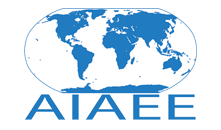Keywords
environmentalism; Extension; international agricultural development(IAD);sustainable agriculture; United States Agency for International Development (USAID)
Abstract
The philosophical perspectives, including significant actors, events, and forces, that influenced and presaged the United States’ approach to international agricultural development are somewhat unclear. The purpose of this historical narrative, therefore, was to understand the key drivers responsible for forging the U.S. framework for technical agricultural assistance abroad, especially in its formative years. The study’s findings were reported by answering two questions. The first question explored historical events, including federal legislative acts and statutes, which precipitated the U.S. approach to international agricultural development. The second research question addressed the philosophical primers imbued in the U.S. approach to international agricultural development, including significant actors responsible for championing it. We assert the environmental pragmatism of Liberty Hyde Bailey and its other proponents was the philosophical foundation and worldview that informed many of the pioneers who guided the U.S. approach to offering agricultural assistance as part of the nation’s international development efforts. As such, werecommend the inclusion of certain aspects of environmentalism in agricultural and extension educator preparation with implications for international and domestic development, including long-term sustainability initiatives
Rights Statements
This Item is protected by copyright and/or related rights. You are free to use this Item in any way that is permitted by the copyright and related rights legislation that applies to your use. For other uses you need to obtain permission from the rights-holder(s).
Recommended Citation
Raczkoski, B. M.,
&
Edwards, M. C.
(2018).
U.S. International Agricultural Development: What Events, Forces, Actors, and Philosophical Perspectives Presaged Its Approach?.
Journal of International Agricultural and Extension Education, 25(2), 11-28.
DOI: https://doi.org/10.5191/jiaee.2018.25202



